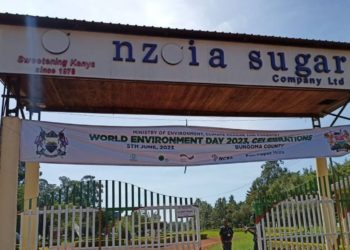The Kenyan automotive industry is facing a notable setback, with new vehicle sales reaching their lowest levels since the onset of the pandemic. The decline in demand can be attributed to several factors, including escalating prices, a weakening local currency, heightened inflation, and increased credit costs. This decline has raised concerns within the industry and ignited a debate about the economic challenges facing the country.
According to data from the Kenya Motor Industry Association (KMIA), local sales in the first nine months of this year decreased by a substantial 11.7%. This decline is a stark contrast to the 9,868 units sold in a similar period the previous year when the market appeared more robust. The economic headwinds responsible for this slump include increased taxation on imports, the weakening of the Kenyan shilling against the US dollar, and rising borrowing costs.
To provide context, the sales figures for the period from January to September are the lowest since 2017, with only 8,427 units sold during that timeframe. This period coincides with the peak of the Covid-19 pandemic, which resulted in a 25.1% year-on-year decrease in sales in the nine months through September 2020. The pandemic disrupted various aspects of the economy, including the automotive sector.
While the KMIA data does not specify the reasons for these monthly sales declines, several challenges have been observed within the automotive industry. These include shortages of specific vehicle models, increasing interest rates for customers seeking financing, and a backlog of pending bills owed by the government. These factors have collectively created a challenging environment for both dealers and customers.
The impact of this falling demand is far-reaching, affecting all major dealers except for CFAO Motors Kenya, which recorded a 6.1% growth. Isuzu East Africa, the market leader, reported an 11.4% drop in sales, from 4,451 units in the prior year to 3,946 units. Despite this decrease, Isuzu’s market share remained relatively stable, reflecting its dominant position in the market.
In contrast, CFAO Motors Kenya managed to defy the industry trend. The company, which merged the operations of Toyota Kenya and DT Dobie in May, reported a 6.1% growth in sales, reaching 2,376 vehicles compared to 2,240 units the previous year.
This impressive performance boosted CFAO’s market share from 22.7% to 27.3%, solidifying its position as a notable player in the market. Simba Corp, known for its multiple franchises, including Mitsubishi and Proton, experienced an 18.5% drop in sales, down to 866 units. Despite this decrease, the company’s market share only slightly narrowed, standing at 9.9%, down from 10.8%.
Tata Holdings, another key player in the market, saw an 18.4% drop in sales, with only 418 units sold compared to 512 units the previous year. This decline highlights the challenges faced by various dealers in the Kenyan automotive market. Notably, CMC Motors, previously holding the Ford, Mazda, and Suzuki franchises, exited the market during this review period. The company, which sold 456 units in the same period the previous year, decided to focus on agricultural equipment, selling only 18 vehicles earlier in the year.
The Kenyan automotive industry is grappling with a significant decrease in new vehicle sales due to a combination of economic factors, including rising prices, a weakening local currency, inflation, rising fuel prices, and increased credit costs.
While some companies like CFAO Motors Kenya have managed to maintain or increase their market share, others have experienced substantial sales declines. It remains to be seen how the industry will adapt to these challenges and whether the economic climate will improve to revitalize the automotive market in Kenya.
















